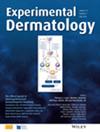Psychological Stress Overactivates IL-23/Th17 Inflammatory Axis and Increases cDC2 in Imiquimod-Induced Psoriasis Models of C57BL/6 Mice
Abstract
Background
Psychological stress often accompanies psoriasis, and both conditions involve an overactive IL-23/Th17 inflammatory axis. However, the mechanism behind the comorbidity of psoriasis and psychological stress remains unclear. This study established a mouse model of comorbid psoriasis and psychological stress to investigate the impact on skin inflammation and the IL-23/Th17 axis. Chronic restraint stress and imiquimod cream were used to induce psychological stress and psoriasis. Behavioural tests included the open-field test and elevated plus maze, while psoriasis severity was assessed using the Psoriasis Severity Index and histopathology. Flow cytometry measured cDC2 populations in the lesion and spleen, and ELISA quantified levels of key inflammatory factors in serum and lesions. Mice with psoriasis alone showed anxiety symptoms, which were significantly exacerbated in the comorbid group. The comorbid group exhibited more severe lesions, with elevated levels of IL-23 and IL-17A in both serum and lesions compared to the psoriasis-only group. The number of CD11c+ cDCs in the dermis and the proportion of cDC2s in the lesion and spleen were also significantly higher in the comorbid group. Psychological stress intensifies anxiety symptoms and exacerbates the inflammatory response in the skin and systemic tissues of mice with comorbid psoriasis and psychological stress. This occurs via the overactivation of the IL-23/Th17 inflammatory axis, leading to increased mobilisation of cDC2s and higher levels of inflammatory mediators like IL-23 and IL-17A, thus chronicling inflammation. These findings enhance our understanding of the mechanisms linking psoriasis and psychological disorders, paving the way for identifying potential therapeutic targets.


 求助内容:
求助内容: 应助结果提醒方式:
应助结果提醒方式:


